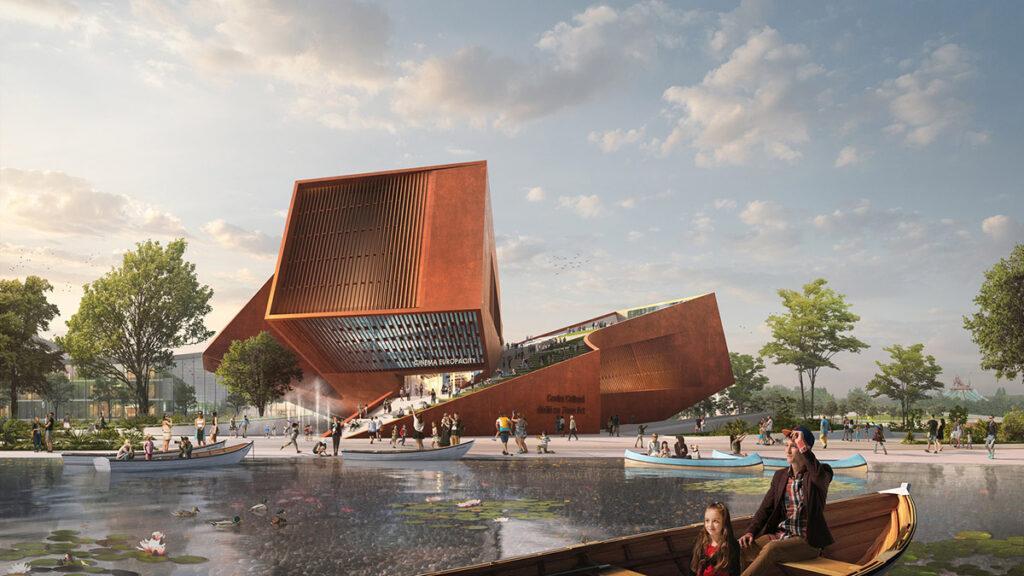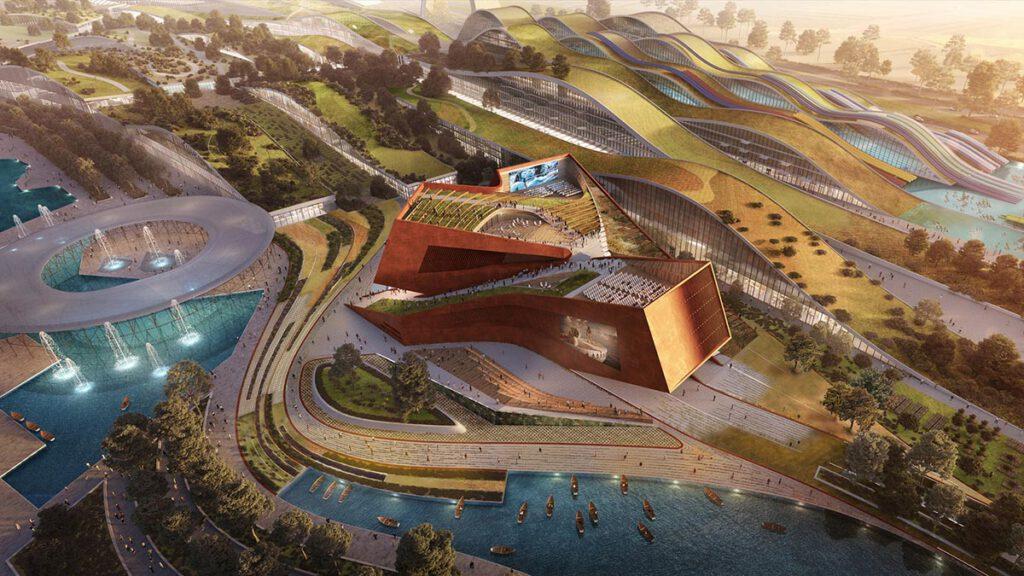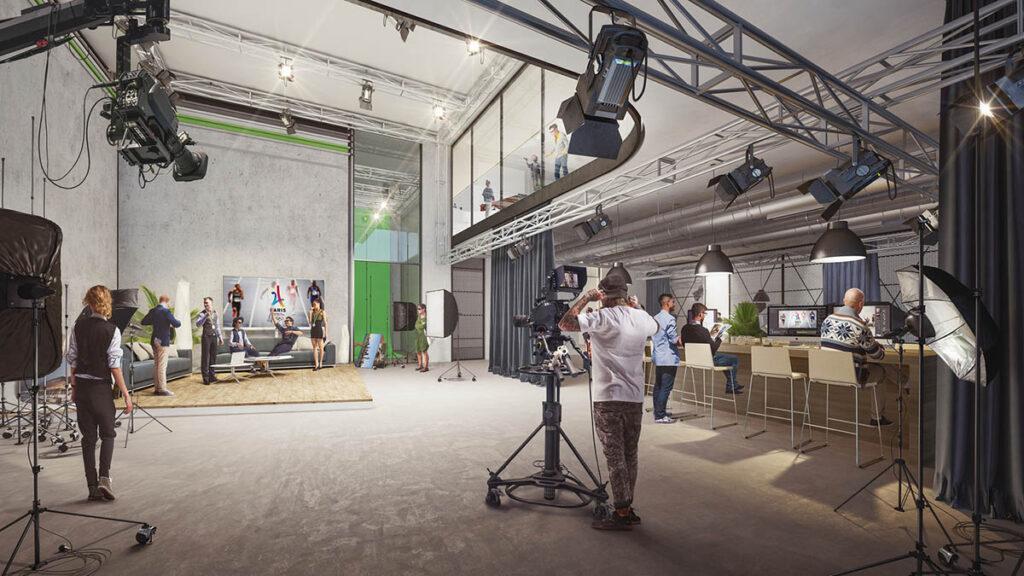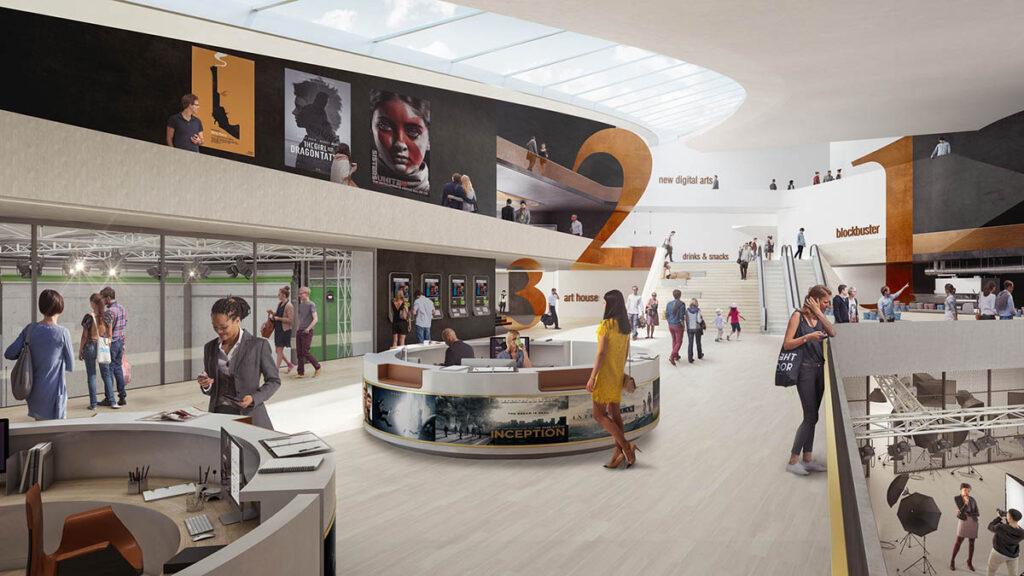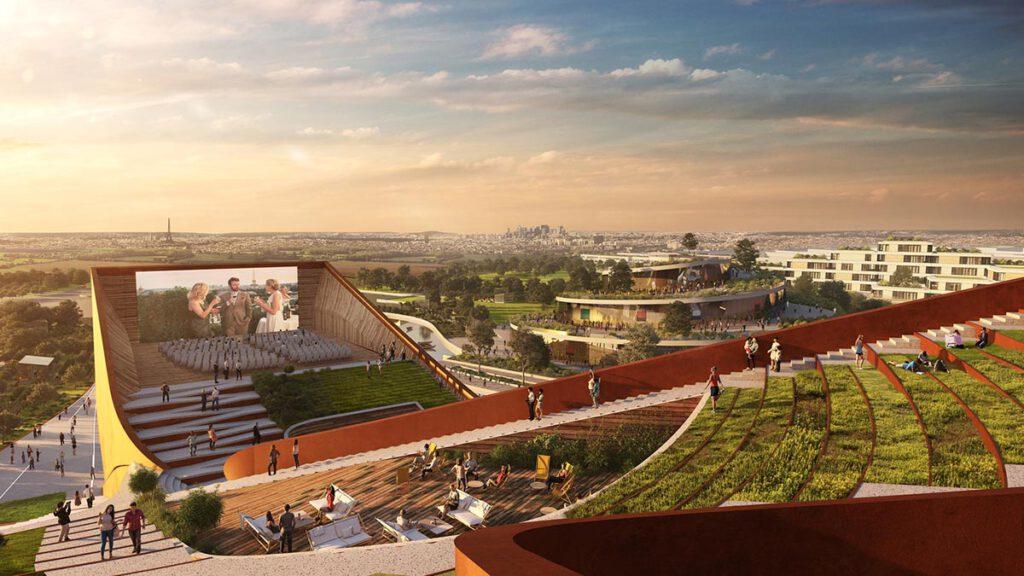Cinema at its best
And the winner is… Centre Culturel! The cinema and culture project by UNStudio came first in the biggest architecture competition organized by private investors in France.
The mind-boggling sum of 3.1 billion euros was supplied by private investors to fund a new cultural monument in their beloved city of Paris. That’s one way of putting it, at least. Those involved prefer wording more along the lines of “patronage”. Although that isn’t something that will have bothered the UNStudio architects. They’ll simply have celebrated this truly spectacular success.
Centre Culturel as part of the big picture
Their submission for the Centre Culturel in the EuropaCity currently under construction in Paris was named the winner of the country’s biggest architecture competition to date. Just to put things in the right context: it means that over the coming years UNStudio will be working shoulder to shoulder with probably the most influential architects in the world right now.
On the same stage as Bjarke Ingels
Specifically, the EuropaCity in Paris is a project by BIG founder Bjarke Ingels. It is conceived as a tourist centre that combines culture, sport, hotels, restaurants, urban farming, retail and leisure for visitors and local residents alike. But that’s another story.
Officially, this spectacular project is called the Centre Culturel Dédié Au 7è Art cinema. “It is designed as both a public space and a cultural laboratory,” emphasizes UNStudio. The concept aims to enhance the cinema experience by offering more than just films. Art exhibitions will also be on show, for example. Leafy roof terraces provide space for relaxation. And visitors will benefit from other community facilities as well.
Capturing the landscape
According to the architects, the building itself is made up of three intertwined sculptural objects that were “inspired by large-scale landscape installations”. This natural quality will be visually underlined by the consistent use of weathered steel, together with its earthy colours.
At the same time, the greenery that serves as a backdrop for the building becomes a feature of the sloping roof. “The surrounding landscape continues as a green carpet atop the roof of the building,” the official description reads. Visitors will also find restaurants and cafés on the roof. And a 360° platform will offer stunning views of Bjarke Ingels’ EuropaCity and the Paris skyline.
Inside the building, the design becomes even more exciting – especially in view of its future purpose. “Cinemas are the perfect example of concealed architecture,” explains UNStudio founding partner Ben van Berkel.
He specifies: “The cinema is the one type of building that becomes invisible once you step inside it. You spend up to two hours in a darkened room, immersed in the alternative space and time of the imagination… and then you leave. This limited user experience of the cinema as a venue led to the key concept that drove our design: the desire to create a building that in its totality offers a much more extensive experience of cinema.”
From the roof into a world of fantasy
Once finished, visitors will enter the building via the lowest part of the sloping roof. From here, the room opens out into the central lobby. The three architecturally intertwined sections of the building are structured according to film genre. They converge in the central space of the building to form the foyer, explains UNStudio.
Centre Culturel has higher aspirations
From the foyer, visitors can access the various screens and also take a look at the film production process on the level below, where the training and production studios are situated. “For the design of the Centre Culturel we were inspired by the ‘Cinéma en plein air’ culture, and we wanted to celebrate the art of film-making,” says Ben van Berkel. With this in mind, they are attempting to conjure up the mood of an open-air cinema.
And because the effect on the outside world is a high priority in times of climate change, the architects were also mindful of any adverse impact when they planned the gigantic structure. Sun and wind studies led to inclining the three blocks to optimize sundeck exposure and minimize wind impact.
A little green does a lot of good
“CO2 emissions are reduced and rainwater is reused, while thick vegetation packages on the park roofs insulate the building against the biggest source of ceiling heat loss and mostly enclosed facades shelter the building from excessive heat gain,” explains UNStudio.
Which leaves just one question unanswered: What if streaming services soon make the world of cinema a thing of the past? We’ll just have to wait and see.
Text: Johannes Stühlinger
Translation: Rosemary Bridger-Lippe
Images: BIG
